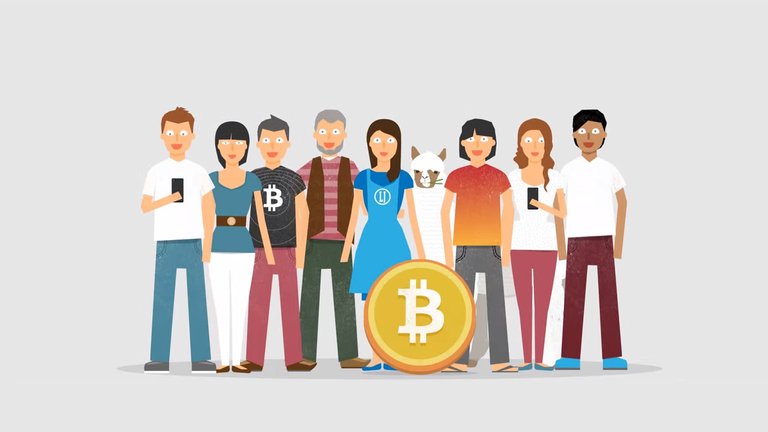Bitcoin is a cryptocurrency and a digital payment system invented by an unknown programmer, or a group of programmers, under the name Satoshi Nakamoto. It was released as open-source software in 2009.

The system is peer-to-peer, and transactions take place between users directly, without an intermediary.These transactions are verified by network nodes and recorded in a public distributed ledger called a blockchain. Since the system works without a central repository or single administrator, bitcoin is called the first decentralized digital currency.
Besides being created as a reward for mining, bitcoin can be exchanged for other currencies, products, and services in legal or black markets.
As of February 2015, over 100,000 merchants and vendors accepted bitcoin as payment. According to research produced by Cambridge University in 2017, there are 2.9 to 5.8 million unique users using a cryptocurrency wallet, most of them using bitcoin.
Etymology and orthography
The word bitcoin occurred in the white paper that defined bitcoin published on 31 October 2008. It is a compound of the words bit and coin. The white paper frequently uses the shorter coin.
There is no uniform convention for bitcoin capitalization. Some sources use Bitcoin, capitalized, to refer to the technology and network and bitcoin, lowercase, to refer to the unit of account. The Wall Street Journal, The Chronicle of Higher Education,and the Oxford English Dictionary advocate use of lowercase bitcoin in all cases, which this article follows.
Blockchain
The blockchain is a public ledger that records bitcoin transactions. A novel solution accomplishes this without any trusted central authority: maintenance of the blockchain is performed by a network of communicating nodes running bitcoin software.
Transactions of the form payer X sends Y bitcoins to payee Z are broadcast to this network using readily available software applications. Network nodes can validate transactions, add them to their copy of the ledger, and then broadcast these ledger additions to other nodes. The blockchain is a distributed database – to achieve independent verification of the chain of ownership of any and every bitcoin amount, each network node stores its own copy of the blockchain.
Approximately six times per hour, a new group of accepted transactions, a block, is created, added to the blockchain, and quickly published to all nodes. This allows bitcoin software to determine when a particular bitcoin amount has been spent, which is necessary in order to prevent double-spending in an environment without central oversight. Whereas a conventional ledger records the transfers of actual bills or promissory notes that exist apart from it, the blockchain is the only place that bitcoins can be said to exist in the form of unspent outputs of transactions.
Transactions
Transactions are defined using a Forth-like scripting language. A valid transaction must have one or more inputs. Every input must be an unspent output of a previous transaction. The transaction must carry the digital signature of every input owner. The use of multiple inputs corresponds to the use of multiple coins in a cash transaction.
A transaction can also have multiple outputs, allowing one to make multiple payments in one go. A transaction output can be specified as an arbitrary multiple of satoshi. As in a cash transaction, the sum of inputs (coins used to pay) can exceed the intended sum of payments. In such a case, an additional output is used, returning the change back to the payer. Any input satoshis not accounted for in the transaction outputs become the transaction fee.
Transaction fees
Paying a transaction fee is optional. Miners can choose which transactions to process and prioritize those that pay higher fees. Fees are based on the storage size of the transaction generated, which in turn is dependent on the number of inputs used to create the transaction. Furthermore, priority is given to older unspent inputs.
Units
The unit of account of the bitcoin system is bitcoin. As of 2014, symbols used to represent bitcoin are BTC,[note 1] XBT,[note 2] and BitcoinSign.svg. Small amounts of bitcoin used as alternative units are millibitcoin (mBTC),[1] microbitcoin (µBTC, sometimes referred to as bit), and satoshi. Named in homage to bitcoin's creator, a satoshi is the smallest amount within bitcoin representing 0.00000001 bitcoin, one hundred millionth of a bitcoin. A millibitcoin equals to 0.001 bitcoin, one thousandth of a bitcoin. One microbitcoin equals to 0.000001 bitcoin, one millionth of a bitcoin.
It seems that every altcoin has its difficulties to scaling up, mostly the solution is POS.But it is hard to control the speed of the inflation in POS, so lastly a new altcoin will come to the market for alleviating the problem. It is just a vicious cycle....